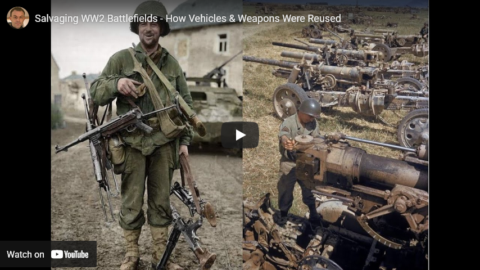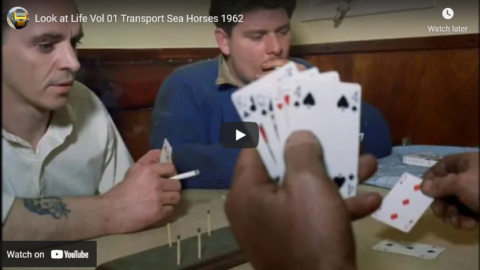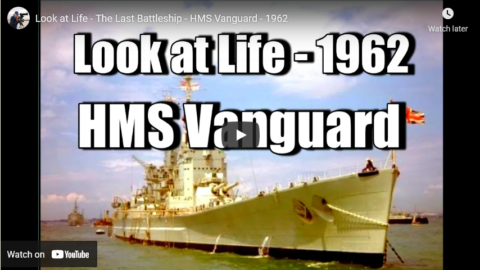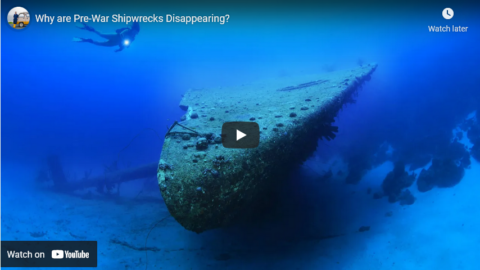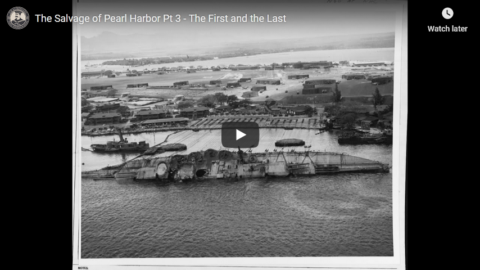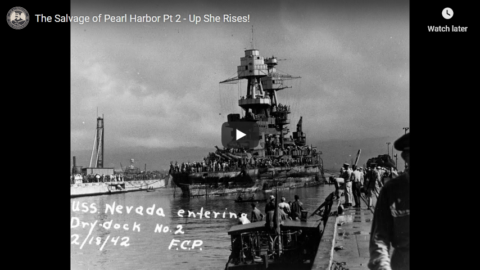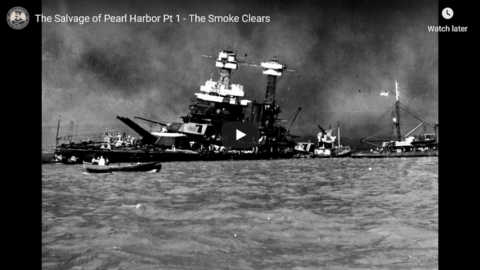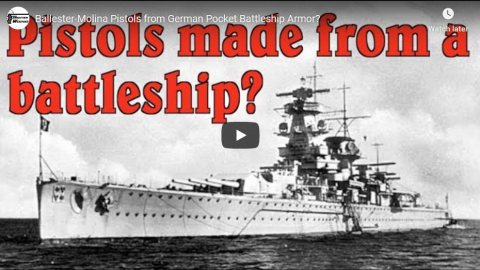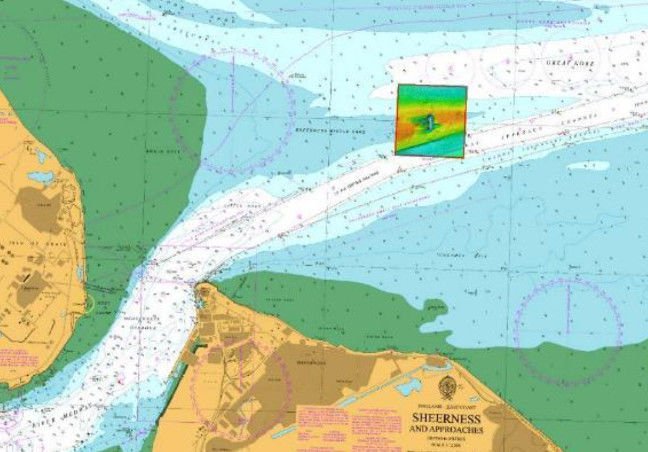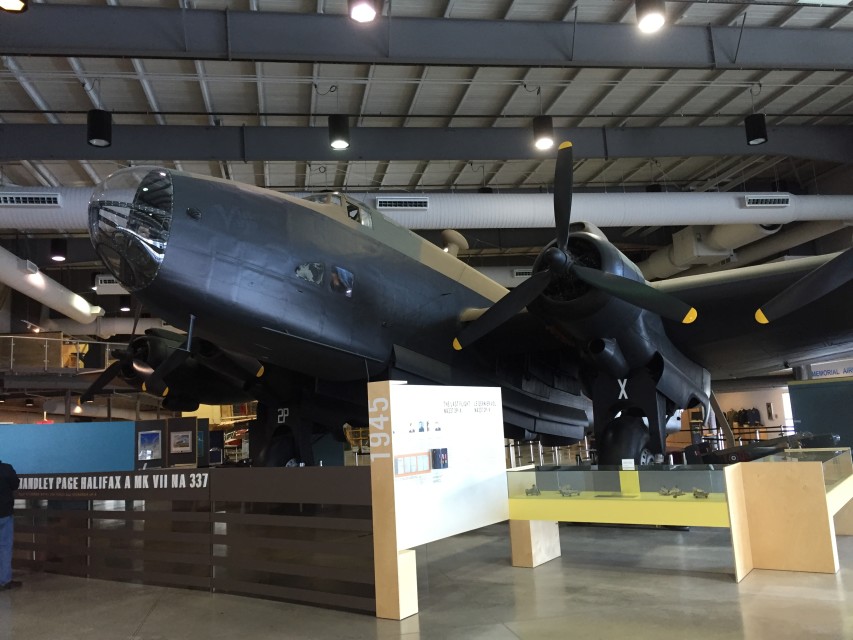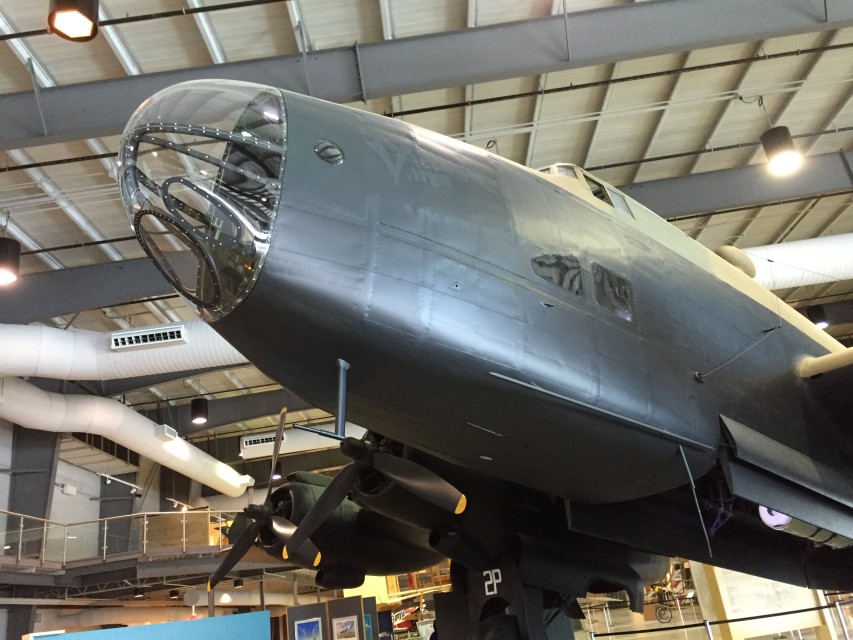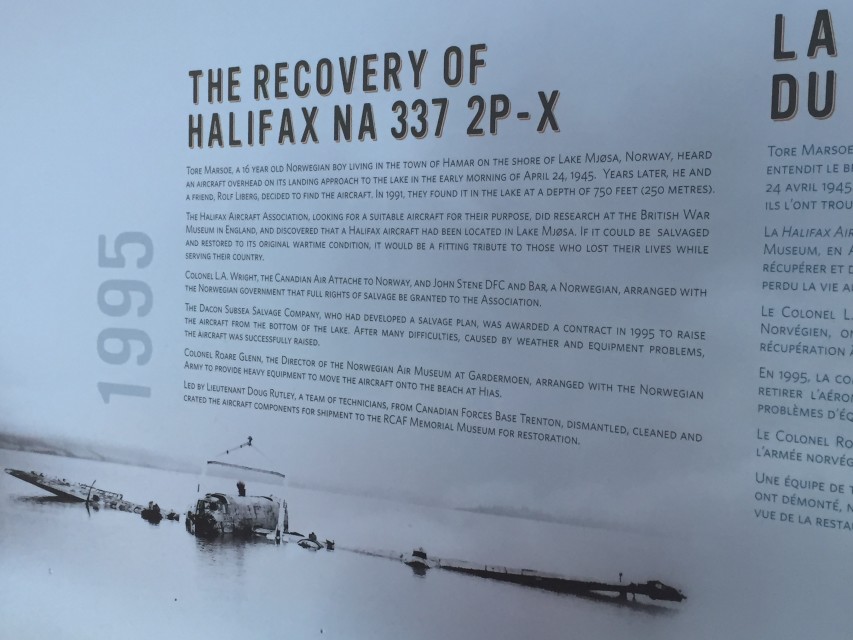Classic Vehicle Channel
Published 29 Jan 2021This film, part of the Look At Life series explores the various ways folk put old disused items of transport back into use. Fascinating archive of engines and rolling stock being cut up for scrap and factory footage of the “new” diesel locomotives being assembled. We take a glimpse into the lives of people upcyling railway memorabilia, steam wagons and rollers and there’s great footage of a Wynns Pacific transporting a steam locomotive to a museum.
May 12, 2022
Look at Life — Turn of the Wheel (1964)
March 10, 2022
Salvaging WW2 Battlefields – How Vehicles & Weapons Were Reused
Mark Felton Productions
Published 25 Nov 2021After the wounded and dead had been removed from a battlefield, what happened to all the military vehicles and weapons left lying around? Find out here.
Dr. Mark Felton is a well-known British historian, the author of 22 non-fiction books, including bestsellers Zero Night and Castle of the Eagles, both currently being developed into movies in Hollywood. In addition to writing, Mark also appears regularly in television documentaries around the world, including on The History Channel, Netflix, National Geographic, Quest, American Heroes Channel and RMC Decouverte. His books have formed the background to several TV and radio documentaries. More information about Mark can be found at: https://en.wikipedia.org/wiki/Mark_Fe…
Help support my channel:
https://www.paypal.me/markfeltonprodu…
https://www.patreon.com/markfeltonpro…Disclaimer: All opinions and comments expressed in the ‘Comments’ section do not reflect the opinions of Mark Felton Productions. All opinions and comments should contribute to the dialogue. Mark Felton Productions does not condone written attacks, insults, racism, sexism, extremism, violence or otherwise questionable comments or material in the ‘Comments’ section, and reserves the right to delete any comment violating this rule or to block any poster from the channel.
Credits: US National Archives; Library of Congress
Thumbnail colorisation (left image) by Paul Reynolds
October 27, 2021
Looting WW2 Java Sea Wrecks – “The Biggest Grave Robbery in History”
Historigraph
Published 26 Oct 2021Support on Patreon to help keep the videos coming https://www.patreon.com/historigraph
Come join the historigraph discord: https://discord.gg/cjTaHFNAjS
Buy Historigraph Posters here! historigraph.creator-spring.comFollow me on Twitch for upcoming livestreams! https://www.twitch.tv/historigraph
► Second Channel: https://www.youtube.com/channel/UCpIj…
► Twitter: https://twitter.com/historigraph
► Instagram: https://www.instagram.com/historigraphSources:
[A] Mediacorp documentary on the salvaging: https://www.youtube.com/watch?v=k9iRR…
[B] Footage of the wreck of Prince of Wales, by Nigel Sinclair – https://www.youtube.com/watch?v=YD96F…
[C] Footage of the wreck of Repulse, by Clayton Neilson – https://www.youtube.com/watch?v=T3U_e…[1] https://www.bbc.co.uk/news/world-asia…
[2] https://www.theguardian.com/world/201…
[3] https://www.theguardian.com/world/201…
[4] https://www.theguardian.com/world/ng-…
[5] https://ses.library.usyd.edu.au/bitst…
[6] https://www.reclamet.co.uk/scrap-meta…
[7] https://www.nst.com.my/news/2015/10/n…
[8] https://www.maritime-executive.com/ar…
September 15, 2021
Look at Life – Sea Horses – Tugboats from the 1960s
PauliosVids
Published 24 Nov 2018[The version of this film I originally scheduled has been taken down, but included a much more informative description, which I’m retaining below:]
capspread
Published 11 Oct 2020#LookatLife #Tugboats #MerchantNavy #QueenMary #QueenElizabeth
Look at Life – Sea Horses – Tugboats from the 1960sThe video is the latest Look at Life, Volume One – Transport called Sea Horses – Little Tugs, without which any big port would come to a standstill, are featured made in May 1962.
Several Tugs are featured in the video along with several ships, including Ocean Liners. Those with names that are recognisable are below. There are others which are not shown below because their names are not known.
Tugboats
William Ryan
Built 1908 – Re-engined 1956 – Sold in 2000 for £1 as a “non-commercial worker”. In 2005, spotted at Hoo Marina converted to a houseboat. In 2009 for sale priced £33k In 2010 – Engine Removed.Sun.X
Built in 1920 in Selby in Yorkshire. 196grt. Disposed 1969 and scrapped in 1969.Effleton Hall
Paddlewheel Tugboat built in 1914. In service until 1967 where she was sold to shipbreakers for scrap. She was left sitting on a mudbank in Dunston. As part of the scrapping process her wooden afterdeck and interior were destroyed by fire prior to being broken up. The tug remained there for 2 years, deck frames warped, wood burned or rotted, hull part flooded and engines rusty but intact. But she was bought by an American and rebuilt on the River Tyne during 1969, modified to enable her to cross the Atlantic Ocean under her own steam, requiring fitting of modern navigational aids, radio, an enclosed wheelhouse and conversion from coal to diesel oil firing. She set sail on 18 September 1969 and arrived late March 1970 at San Francisco. She was donated to the National Park Service in 1979 and is now berthed at Hyde Street Pier, San Francisco. She has been restored to resemble her condition post-War 1946. 166grt – Length – 100 feet; Beam 21 feet; Depth of hold 10.8 feet.Gladstone – Registered at Liverpool
Formby – Built 1951 Registered at Liverpool – 237grt Steam Engine
Canada – Registered at Liverpool
Marinia – Ocean going Tugboat
Poolzee – Dutch Smit Tug – Built 1942
Hestor – Could be Dutch
Ocean Liners
Queen Mary – 81,000 grt
In service between 1936 and 1967. She is now permanently moored as a tourist attraction, hotel, museum and event facility in Long Beach California.Queen Elizabeth – Largest Ocean Liner at the time at 83,000 grt. In service between 1939 and 1968. Caught fire in Hong Kong in 1972 and completely destroyed.
Cargo Ships
Northern Clipper – No info
Toula – Built in 1937 as Westralia as a passenger-cargo ship. Renamed Toula in 1959 and in 1970 broken up in Shanghai.
Allegrity – Built 1945 as a coastal tanker. In 1946 renamed Sobat. In 1951 renamed Allegrity and purchased by FT Everard. On 22 December 1961 she capsized after grounding near Falmouth. She was a total loss
798grt Length – 183 feet; Breadth – 28 feet; Depth – 13 feet
Speed – 9 knots.
July 28, 2021
Possible relic from the 1917 Halifax explosion discovered by scuba diver
If you’re not familiar with the Halifax explosion, I collected some information about it here. One of the lesser-known ships involved in the disaster was the schooner St. Bernard, which was completely destroyed in the explosion of the cargo ship SS Mont Blanc after it collided with the Belgian relief ship Imo in the Narrows:

The schooner St. Bernard, which was destroyed when the Mont Blanc exploded nearby.
Photo from the Nova Scotia Museum.
A Halifax scuba diver has found something that could shed a little new light on one aspect of a dark chapter in Nova Scotian history.
Bob Chaulk has explored Halifax harbour from the Bedford Basin to Chebucto Head with hundreds of scuba dives over the last 30 years. But this spring, a routine dive in a small cove in the Narrows between Halifax’s two bridges led him to a big find.
Amid the usual assortment of scuttling crabs, polished bottles and bits of plastic trash, he came upon a huge, heavy object in Tufts Cove.
“When I first saw the anchor, I thought, OK, there’s a wreck here, some old derelict came in here. But there’s no way a ship that size could have gotten in here,” he said.
He explored until his air just about ran out. He estimated the anchor was about two metres long and weighed 135 kilograms. A ship that needed an anchor that size could not have sailed into shallow, rocky Tufts Cove, he thought.
So how did the old anchor get there?
He looked across the Narrows and found himself staring right at ground zero for the Halifax Explosion, which killed nearly 2,000 people. On Dec. 6, 1917, the vessel Imo and the Mont Blanc, a ship carrying explosive cargo, collided. The Mont Blanc caught fire and drifted into Pier 6, a space occupied today by the giant Halifax Shipyard building. The St. Bernard, a lumber schooner, was also at the dock.
“So now you have two ships side by side with a dock in between them. Here’s the Mont Blanc, here’s the Imo,” Chaulk said, showing the ships’ positions with his hands. “This one blows up, destroys this one, and I contend the anchor [of the St. Bernard] went through the air and landed right here.”

A modern day view of the Narrows, showing Tufts Cove to the north and the huge Halifax Shipyard complex on the south side of the channel.
Google Maps.
I suspect that the paved area to the right of the cove proper is largely landfill and the shoreline of 1917 probably followed much closer to the railway line.
H/T to Colby Cosh for the link.
July 17, 2021
Look at Life – The Last Battleship – HMS Vanguard (1962)
capspread
Published 29 Nov 2020#LookatLife #HMSVanguard #RoyalNavy #Shipping #Battleship
The life and death of HMS Vanguard, and the uses to which her steel will be put.
Another Look at Life Documentary from Volume 2 – Military – The Last Battleship – HMS Vanguard made in 1962.
HMS Vanguard was a British fast battleship built during the Second World War & commissioned afterwards. She was the biggest and fastest of the Royal Navy’s battleships, the only ship of her class, and the last battleship to be built. Work on Vanguard was started and stopped several times during the war and her design was revised several times during her construction to reflect war experience. These stoppages and changes prevented her from being completed before the end of the war.
Vanguard‘s first task after completing her sea trial at the end of 1946 was, early the next year, to convey King George VI & his family on the first Royal Tour of South Africa by a reigning monarch. While refitting after her return, she was selected for another Royal Tour of Australia and New Zealand in 1948. This was cancelled due to King George’s declining health & Vanguard briefly became flagship of the Mediterranean Fleet in early 1949. After her return home in mid-1949, she became flagship of the Home Fleet Training Squadron. Throughout her career, the battleship usually served as the flagship of any unit to which she was assigned. During the early 1950s, Vanguard was involved in a number of training exercises with NATO forces. In 1953 she participated in Queen Elizabeth II’s Coronation Review. While she was refitting in 1955, the Admiralty announced that the ship was going to be put into reserve upon completion of the work. Vanguard was sold for scrap and was broken up beginning in 1960.
Vanguard had an overall length of 814 feet 4 inches (248.2 m), a beam of 107 feet 6 inches (32.8 m) & a draught of 36 feet (11 m) at deep load. She displaced 44,500 long tons (45,200 t) at standard load and 51,420 long tons (52,250 t) at deep load. The ship was significantly larger than her predecessors of the class, almost 50 feet (15.2 m) longer & displaced about 6,000 long tons (6,100 t) more than the older ships at deep load. Vanguard was overweight by some 2,200 long tons (2,200 t), which magnified the difference. The ship had a complete double bottom 5 feet (1.5 m) deep & she was divided into 27 main compartments by watertight bulkheads.
The King George V-class ships had been built with almost no sheer to the main deck forwards to allow ‘A’ turret to fire straight forward at zero elevation, resulting in those ships being wet forward. Vanguard was redesigned as a result of this experience, significant sheer & flare being added to the bow. The ship was well regarded as seaworthy, able to keep an even keel in rough seas. At full load, Vanguard had a metacentric height of 8.2 feet (2.5 m).
As a fleet flagship, her complement was 115 officers and 1,860 men in 1947. Air conditioning was provided for many of the ship’s control spaces, & asbestos insulation was provided on exposed areas of the ship’s sides, decks and bulkheads. Steam heating was provided for her armament, instruments, look-out positions & other equipment to make Vanguard suitable for operations in the Arctic. An Action Information Centre was fitted below the main armour deck with facilities to track aircraft & ships around Vanguard.
Vanguard was laid down on 2 October 1941 by John Brown and Company of Clydebank, Scotland. After the Japanese invasion of Malaya in December, the ship was given an A1 priority in the hope of finishing her by the end of 1944, and construction of the light cruiser HMS Bellerophon, as well as some merchant shipping, was halted to expedite the ship’s completion. This was unsuccessful, however, due to a shortage of skilled labour. As a result, it was not until 30 November 1944 that the ship was launched. Princess Elizabeth presided over this ceremony, the first ship she ever launched, and was presented with a diamond rose brooch to commemorate the event.
The end of hostilities following Japan’s surrender reduced the need for new warships, and consequently the ship was not commissioned until 12 May 1946. By this time, a total of £11,530,503, including £3,186,868 for the modernisation of the main armament, had been spent on producing Vanguard.
On 9 October 1959 the Admiralty announced that Vanguard would be scrapped, as she was considered obsolete and too expensive to maintain. She was decommissioned on 7 June 1960 & sold to BISCO for £560,000. On 4 August 1960, the ship was towed from Portsmouth to the breaker’s yard at Faslane, Scotland. As Vanguard was being towed towards the harbour entrance, she slewed across the harbour and ran aground near the Still & West pub. She was pulled off by five tugboats an hour later, and made her final exit from Portsmouth. Five days later she arrived at Faslane, and by mid-1962 the demolition process was complete.
March 23, 2021
Why are Pre-War Shipwrecks Disappearing?
Calum
Published 22 Aug 2020Pre-war shipwrecks are disappearing from the seabed. Why? A look at the sad reality of illegal salvaging that is destroying numerous war graves and historical wrecks around the world, told from the site of some of the most famous shipwrecks in the world; Scapa Flow.
The Guardian has done some amazing work in documenting this problem, worth a read if you have the time:
https://www.theguardian.com/world/201…
00:00 – Introduction & History of Scapa Flow
01:00 – Scuttling & Salvaging of the German High Fleet
02:45 – The Value of Pre-War Steel
03:54 – The Disappearing Shipwrecks
06:03 – HMS Royal Oak
10:16 – Disappearing Wargraves
10:58 – OutroTwitter………………….►https://twitter.com/calumraasay
Instagram…………….►http://instagram.com/calumraasay
Website………………..►http://calumgillies.com
December 11, 2020
The Salvage of Pearl Harbor Pt 3 – The First and the Last
Drachinifel
Published 2 Dec 2020Today we look at the salvage efforts on the USS Shaw, first vessel salvaged from the remains of the attack on Pearl Harbor and the work on the last two vessels under the team’s care, the Utah and Oklahoma
Sources:
www.amazon.co.uk/gp/product/B00C0JIXJO
https://www.history.navy.mil/our-coll…
www.amazon.co.uk/Pearl-Harbor-Fleet-Salvage-Appraisal/dp/0898755654
www.amazon.co.uk/Descent-into-Darkness-Harbour-Divers/dp/0891417451
Videos – US National Archives / US Department of DefenseFree naval photos and more – www.drachinifel.co.uk
Want to support the channel? – https://www.patreon.com/Drachinifel
Want a shirt/mug/hoodie – https://shop.spreadshirt.com/drachini…
Want a poster? – https://www.etsy.com/uk/shop/Drachinifel
Want to talk about ships? https://discord.gg/TYu88mt
Want to get some books? www.amazon.co.uk/shop/drachinifelDrydock
Episodes in podcast format – https://soundcloud.com/user-21912004
December 10, 2020
The Salvage of Pearl Harbor Pt 2 – Up She Rises!
Drachinifel
Published 18 Nov 2020Today we look at the salvage efforts on the three battleships outright sunk in the attack on Pearl Harbor that would be returned to service.
Sources:
www.amazon.co.uk/gp/product/B00C0JIXJO
https://www.history.navy.mil/our-coll…
www.amazon.co.uk/Pearl-Harbor-Fleet-Salvage-Appraisal/dp/0898755654
www.amazon.co.uk/Descent-into-Darkness-Harbour-Divers/dp/0891417451
Videos – US National Archives / US Department of DefenseFree naval photos and more – www.drachinifel.co.uk
Want to support the channel? – https://www.patreon.com/Drachinifel
Want a shirt/mug/hoodie – https://shop.spreadshirt.com/drachini…
Want a poster? – https://www.etsy.com/uk/shop/Drachinifel
Want to talk about ships? https://discord.gg/TYu88mt
Want to get some books? www.amazon.co.uk/shop/drachinifelDrydock
Episodes in podcast format – https://soundcloud.com/user-21912004
December 9, 2020
The Salvage of Pearl Harbor Pt 1 – The Smoke Clears
Drachinifel
Published 11 Nov 2020Today we look at the start of the salvage efforts in the aftermath of the attack on Pearl Harbour.
Sources:
www.amazon.co.uk/gp/product/B00C0JIXJO
https://www.history.navy.mil/our-coll…
www.amazon.co.uk/Pearl-Harbor-Fleet-Salvage-Appraisal/dp/0898755654
www.amazon.co.uk/Descent-into-Darkness-Harbour-Divers/dp/0891417451Free naval photos and more – www.drachinifel.co.uk
Want to support the channel? – https://www.patreon.com/Drachinifel
Want a shirt/mug/hoodie – https://shop.spreadshirt.com/drachini…
Want a poster? – https://www.etsy.com/uk/shop/Drachinifel
Want to talk about ships? https://discord.gg/TYu88mt
Want to get some books? www.amazon.co.uk/shop/drachinifelDrydock
Episodes in podcast format – https://soundcloud.com/user-21912004
December 18, 2019
Ballester-Molina Pistols from German Pocket Battleship Armor?
Forgotten Weapons
Published 17 Dec 2019http://www.patreon.com/ForgottenWeapons
Cool Forgotten Weapons merch! http://shop.bbtv.com/collections/forg…
There is an old gun shop tale that Argentine Ballester-Molina pistols were made form the salvaged armor plate of the pocket battleship Admiral Graf Spee. The Graf Spee was scuttled in the Rio de la Plata estuary in December 1939, only a few miles from the HAFDASA factory in Buenos Aires, and Argentina did not have the domestic steel reserves to make enough pistols…
See Michael Parker’s full article on this, including the exact results of his metallurgical analysis, here:
https://www.americanrifleman.org/arti…
Contact:
Forgotten Weapons
6281 N. Oracle #36270
Tucson, AZ 85704
January 30, 2018
Fitness tracker heat map shows dangerous activity near wrecked WW2 ammunition ship
The SS Richard Montgomery was a WW2 Liberty ship that ran aground near Sheerness in August 1944 carrying a cargo of bombs and other explosives. Part of the cargo was removed before the ship broke up and sank just offshore. There’s still quite a lot of TNT onboard the wreck, and it’s recently come to light that someone has been visiting the wreck, thanks to fitness tracker data:
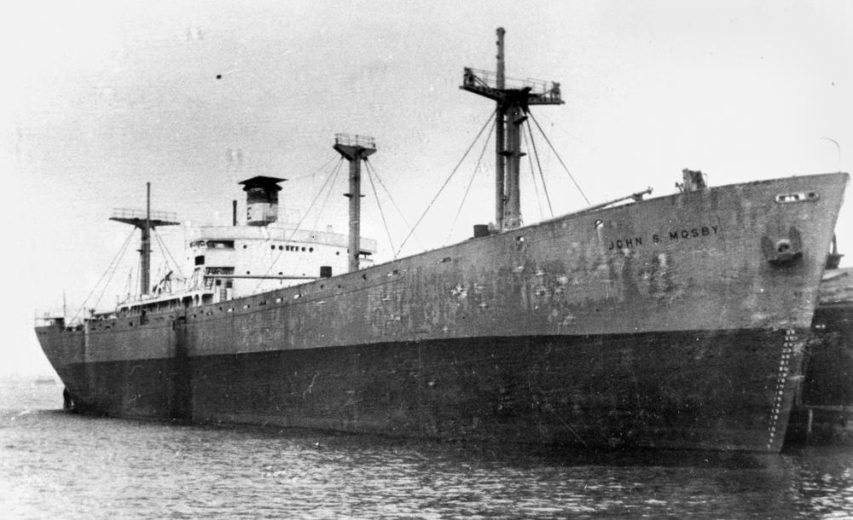
The SS John S. Mosby, a Liberty ship similar to the SS Richard Montgomery
Photo from the John Oxley Library, State Library of Queensland, via Wikimedia.
The information came to light after social media users realised that the latest version of Strava’s heat map, which shows the aggregated routes of all of its users, could be used to figure out where Western military bases in the Middle East are. Fitness-conscious soldiers, running around the bases’ perimeters, built up visible traces on the heat map over time.
However, of much more concern is the revelation that people have been poking around the wreck of the SS Richard Montgomery, a Second World War cargo ship that was carrying thousands of tonnes of explosive munitions from America to the UK. The ship grounded in the Thames Estuary, in England, in August 1944, barely two miles north of Sheerness.
Extract from Admiralty chart of Sheerness (Crown copyright):
The multicoloured box is the location of the SS Richard Montgomery wreckAlthough wartime salvage parties managed to scavenge a large amount of ordnance from the grounded Liberty ship, her hull split in two and sank, taking around 1,400 tonnes of explosives down with her, before the job could be completed. Officials decided to leave the wreck in place.
According to a 1995 survey report [PDF] on the wreck: “The bombs thought to be on board are of two types. The bulk are standard, un-fused TNT bombs. In addition, some 800 fused cluster bombs are believed to remain. These bombs were loaded with TNT. They could be transported fused because the design included a propeller mechanism at the front which only screwed the fuse into position as the bombs fell from an aircraft. All the bombs could therefore be handled – with care – when the accident occurred.”
[…]
The 1995 report noted that TNT “does not react with water and will not explode if it is damp”, before adding that the brass-cased cluster bombs’ lead-based fuses “will combine with brass to produce a highly unstable copper compound which could explode with the slightest disturbance”. Although the compound “if formed, will wash away in a few weeks”, it was not made clear in the report how often the compound forms and creates the dangerous hair-trigger condition. Experts believe that the best way of keeping the wreck safe is not to disturb it, which led to a 500-metre exclusion zone being imposed around it.
I thought the ship’s name sounded familiar … I posted a video about the dangers of this wreck back in 2013. Last month, I posted a video about the Liberty ship program.
December 15, 2016
“Rebuilding” a Mosquito
Robert Beckhusen on the ongoing attempt to bring a long-ago crashed de Havilland Mosquito back to life:
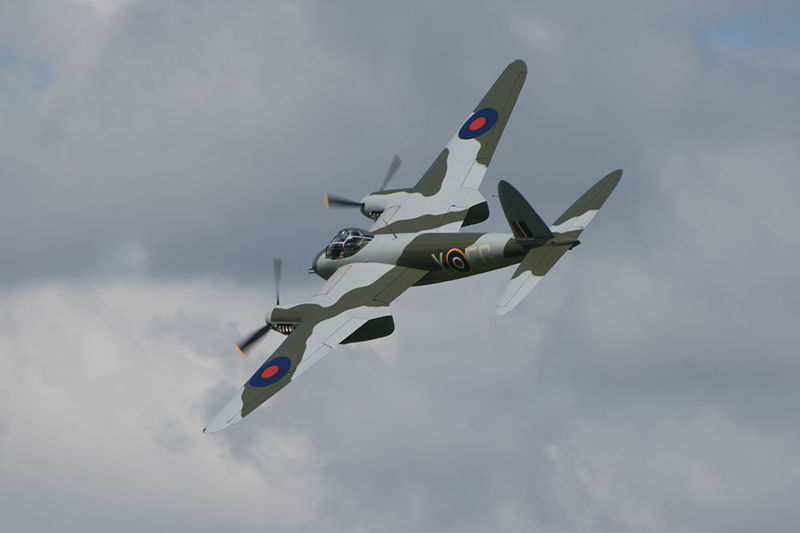
De Havilland DH-98 Mosquito at the Ardmore Airport de Havilland Mosquito Launch Airshow, 2012 (via Wikipedia)
The de Havilland Mosquito was arguably the best British plane of World War II, the war’s most effective fighter-bomber and one of the most versatile military planes ever built. That’s why it’s strange so few of the wooden, twin-engine machines appear at air shows.
There are currently only three airworthy Mosquitos in the world.
A group of British engineers are trying to change that by bringing a Mosquito back from the dead. Since 2012, the U.K.-based People’s Mosquito project has raised funds and begun working to restore an ex-Royal Air Force Mosquito which crashed in 1949, was buried and then recovered 61 years later.
“A much beloved friend of ours, and our patron, Capt. Eric ‘Winkle’ Brown, once said that three British aircraft were preeminent in World War II,” Ross Sharp, the People’s Mosquito’s director of engineering told War Is Boring. “One was the Spitfire, the other was the Lancaster and the third was the Mosquito, and if you had to rank them, you’d put the Mosquito first.”
“That was due, I think, because it performed so many roles and performed them superbly.”
[…]
On Feb. 14, 1949, the NF.36 fighter RL249 suffered failures in both engines after takeoff and crashed near RAF Coltishall in Norfolk. Sgt. W.B. Kirby, the plane’s navigator, later died from his injuries. RL249’s remains were recovered in 2010, but the pieces are almost entirely unusable.
Instead, the People’s Mosquito team is building — largely from scratch — a Mosquito FB.VI variant, a highly-configurable fighter-bomber. The plane will thus be a “data plate restoration,” meaning the airframe, wings and engines will be fresh, but it will also contain some non-structural bits from the original RL249.
The original Mosquitos did not contain data plates. But that’s not necessary for the team to get the finished aircraft certified as a restoration.
“Providing you possess everything that is left of that aircraft, legally you are in possession of what our civil aviation authorities call ‘the mortal remains’ — that’s the technical term — and you can then restore it,” Sharp said.
“It’s going to be mostly new parts, of course, which in a predominantly wooden aircraft like the Mosquito is vital.”
November 2, 2015
The National Air Force Museum of Canada
Elizabeth and I spent the weekend in the Bay of Quinte area, visiting Prince Edward County, Belleville, and Trenton. While we were in Trenton, we stopped in at the National Air Force Museum of Canada. While the Sea King may not be in the collection yet (at least, not in the collection visible to the public), many other Canadian Armed Forces aircraft are, including the prize of the museum, the Handley Page Halifax heavy bomber:
It’s a big enough aircraft that it’s hard to do it justice in a photograph.
This particular restored aircraft was shot down late in the war on a mission to deliver supplies to Norwegian resistance fighters and later recovered from a Norwegian lake.
Other aircraft in the collection include a replica of the Silver Dart, the first powered aircraft to fly in Canada (February 23, 1909), a replica of the Burgess-Dunne floatplane, the first aircraft purchased for the Canadian military (September, 1914), a CF-86 Sabre, a CF-100 Canuck, a CF-5 Freedom Fighter, a CF-104 Starfighter, a CF-101 Voodoo, a CF-18 Hornet, a CP-107 Argus, a CC-130 Hercules, and a CP-102 Tracker among other aircraft.
April 25, 2015
Finnish divers binge on 200-year-old wine and beer
Perhaps “binge” isn’t quite the right word to use…
Finnish divers recently discovered several crates of champagne and beer from a sunken ship that had been at the bottom of the Baltic Sea for nearly two centuries. The experts carefully identified, researched, and analyzed the alcohol…then they drank it.
The divers discovered the wreck just south of Aaland, a Finland-controlled archipelago of some 6,500 small islands in the Baltic Sea. Inside the sunken schooner, they found 168 bottles of champagne and an undisclosed amount of bottles of beer. The ship itself likely dates back to the second quarter of the 19th century, making its cargo almost certainly the oldest alcoholic drinks in existence. By comparison, the oldest wines in private hands are only thought to date back to the very end of the 1800s.
This entire story is a good reminder of a basic scientific truth — when in doubt, start drinking the 200-year-old booze. The divers first discovered the champagne was drinkable when changing pressures caused the cork to pop off one of the bottles, and a diver decided to take a swig. He expected to taste seawater that had seeped into the bottle over the last 200 years — which raises very legitimate questions about just why he decided to take a sip in the first place — but was shocked to discover the wine still tasted fine.
H/T to Never Yet Melted, for linking to a story from 2010.


